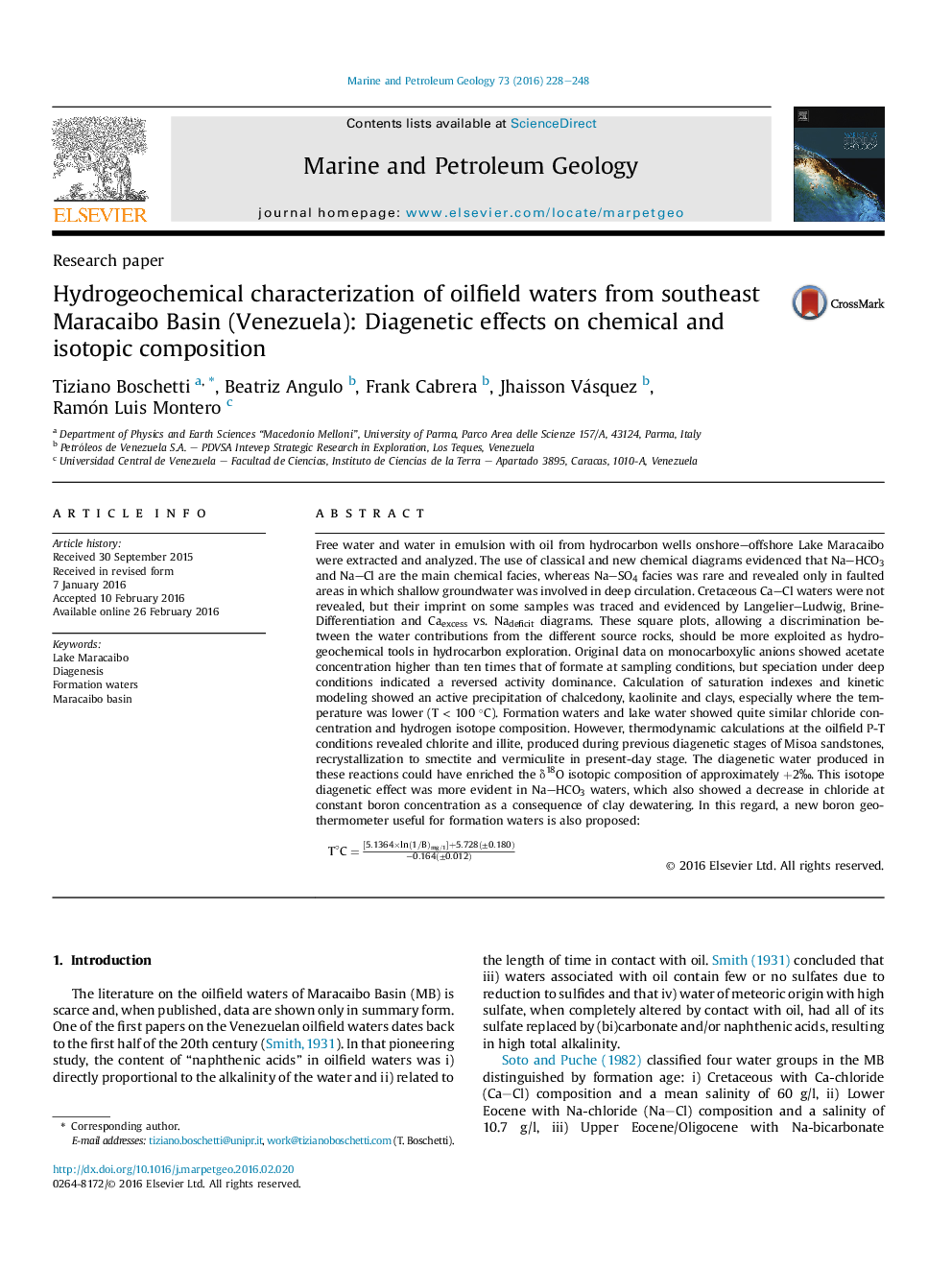| Article ID | Journal | Published Year | Pages | File Type |
|---|---|---|---|---|
| 6434794 | Marine and Petroleum Geology | 2016 | 21 Pages |
â¢Na-HCO3 and Na-Cl oilfield waters are detected in Maracaibo Basin.â¢Chemical square plots are powerful tools to discriminate water from the different sources rocks.â¢Oilfield δ2H(H2O) are the same as Lake Maracaibo.â¢Dewatering diagenetic reactions produce dilution and 18O enrichment.
Free water and water in emulsion with oil from hydrocarbon wells onshore-offshore Lake Maracaibo were extracted and analyzed. The use of classical and new chemical diagrams evidenced that Na-HCO3 and Na-Cl are the main chemical facies, whereas Na-SO4 facies was rare and revealed only in faulted areas in which shallow groundwater was involved in deep circulation. Cretaceous Ca-Cl waters were not revealed, but their imprint on some samples was traced and evidenced by Langelier-Ludwig, Brine-Differentiation and Caexcess vs. Nadeficit diagrams. These square plots, allowing a discrimination between the water contributions from the different source rocks, should be more exploited as hydrogeochemical tools in hydrocarbon exploration. Original data on monocarboxylic anions showed acetate concentration higher than ten times that of formate at sampling conditions, but speciation under deep conditions indicated a reversed activity dominance. Calculation of saturation indexes and kinetic modeling showed an active precipitation of chalcedony, kaolinite and clays, especially where the temperature was lower (T < 100 °C). Formation waters and lake water showed quite similar chloride concentration and hydrogen isotope composition. However, thermodynamic calculations at the oilfield P-T conditions revealed chlorite and illite, produced during previous diagenetic stages of Misoa sandstones, recrystallization to smectite and vermiculite in present-day stage. The diagenetic water produced in these reactions could have enriched the δ18O isotopic composition of approximately +2â°. This isotope diagenetic effect was more evident in Na-HCO3 waters, which also showed a decrease in chloride at constant boron concentration as a consequence of clay dewatering. In this regard, a new boron geothermometer useful for formation waters is also proposed:T°C=[5.1364Ãln(1/B)mg/1]+5.728(±0.180)â0.164(±0.012)
